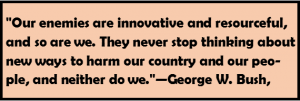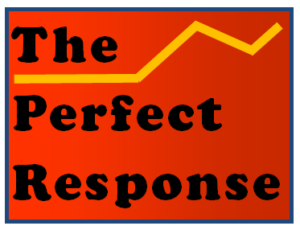Who hasn’t read something, including this blog, only to find a sudden and apparently unplanned descent into verbal mayhem? Perhaps the author didn’t notice his elbow resting on the keyboard. Or maybe the four-legged member of the family decided to add a few keystrokes.
 Creating sentences on paper or in pixels poses lifelong challenges. Even accomplished writers usually demur if you tell them they are masters of their craft. Most will admit to writing in drafts that can number in the double digits, and most share the almost universal experience of re-reading old material with the nagging feeling that it could have been better. Writing is one skill that is rarely mastered, or so I would like to believe. Literacy is a lifelong project. Even so, an occasional stray word left in the wrong neighborhood is not the largest problem. Difficulties arise at the other end of the continuum, where what appears “finished” to a novice is only a pale version of what could be. Early drafts deserve to be thoroughly marked up, preferably by a second set of eyes.
Creating sentences on paper or in pixels poses lifelong challenges. Even accomplished writers usually demur if you tell them they are masters of their craft. Most will admit to writing in drafts that can number in the double digits, and most share the almost universal experience of re-reading old material with the nagging feeling that it could have been better. Writing is one skill that is rarely mastered, or so I would like to believe. Literacy is a lifelong project. Even so, an occasional stray word left in the wrong neighborhood is not the largest problem. Difficulties arise at the other end of the continuum, where what appears “finished” to a novice is only a pale version of what could be. Early drafts deserve to be thoroughly marked up, preferably by a second set of eyes.
 Everyone needs an editor. We should expect to hire one or dragoon a friend into the role. And why not? Academic presses often send a manuscript out to three experts for review before they green-light a book. Good surgeons often welcome another set of eyes to review scans and x-rays. Playwrights do workshop readings to discover dead passages or weak second acts. And advertisers use illustrators to ‘mock up’ storyboards for television commercials before they commit to a full-scale film shoot. Rare is a writer like John McPhee, who is so thorough in his research and phrasing that an editor might seem unnecessary.
Everyone needs an editor. We should expect to hire one or dragoon a friend into the role. And why not? Academic presses often send a manuscript out to three experts for review before they green-light a book. Good surgeons often welcome another set of eyes to review scans and x-rays. Playwrights do workshop readings to discover dead passages or weak second acts. And advertisers use illustrators to ‘mock up’ storyboards for television commercials before they commit to a full-scale film shoot. Rare is a writer like John McPhee, who is so thorough in his research and phrasing that an editor might seem unnecessary.
Everyone needs an editor. Another set of eyes will improve almost any text.
I plead with my students to try out their work on others they know. This is perhaps the single best reason to have a college roommate. But I still get projects that describe Washington and Jefferson as “too pivotal presidents,” or analyses of “communication problems that defy easy remededeys.” And woe to folks who count on being bailed out by a computer spell-check program. My computer was fine with the word “dissent” in the original pull-quote at the top of this piece.
 These cases may sound like this need is limited to professionals. But recall the last time you read a family’s holiday letter that revealed more about one of its members than better judgment would allow. Johnny may not want everyone to know that he’s been “challenged” to complete his remedial math course. Such a letter probably should have been vetted by someone else with a more protective instinct.
These cases may sound like this need is limited to professionals. But recall the last time you read a family’s holiday letter that revealed more about one of its members than better judgment would allow. Johnny may not want everyone to know that he’s been “challenged” to complete his remedial math course. Such a letter probably should have been vetted by someone else with a more protective instinct.
The need for an outsider’s input is also apparent for missives that come from a manager who says too much or includes too little. For example, it would be helpful to know the day and time for that important meeting that she has just announced. And every person mentioned in such a piece has the right to expect that their name will be spelled correctly. Smart managers will usually welcome a second pair of eyes, but certainly not all. The most insecure may not appreciate being saved from errors by more literate underlings.
Who hasn’t read this blog only to find passages where the best explanations for the sudden disintegration of a sentence is that the writer experienced an errant brain synapse? It’s the curse of blogging that pieces are sent into the world too soon, with the equivalent of torn seams, buttons missing and tags still attached.
![]()



